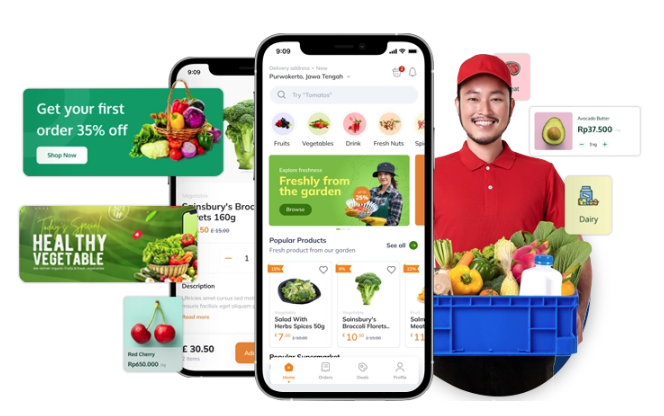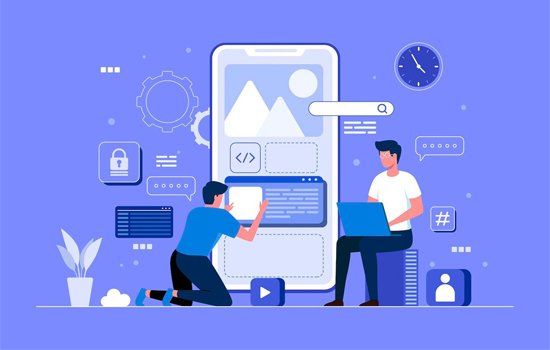On-Demand Convenience: Examining the User Experience of Instacart Clone Applications

In the digital age, convenience has become a driving force behind the adoption of new technologies and services. One such innovation that has revolutionized the way we shop for groceries and essentials is on-demand grocery delivery apps. Instacart, a pioneering player in this field, has set the bar high for user experience and convenience. This article explores the user experience of Instacart clone applications, diving into their impact on modern lifestyles and the challenges they face in replicating the seamless convenience provided by the original service.
The Rise of On-Demand Grocery Delivery
The traditional grocery shopping experience involves visiting physical stores, navigating aisles, and waiting in checkout lines. The emergence of on-demand grocery delivery apps has reimagined this experience, allowing users to browse and purchase items from the comfort of their homes. Instacart, a trailblazer in this industry, connects users with personal shoppers who handpick and deliver items to their doorsteps. The success of Instacart has inspired the creation of clone applications, aiming to offer similar convenience and efficiency to users.
User-Centric Design: The Heart of Instacart’s Appeal
Instacart’s success can be attributed to its user-centric design, which places convenience and ease of use at the forefront. A clean and intuitive interface enables users to effortlessly search for products, add them to their virtual carts, and schedule deliveries. The ability to save favorite items, access past orders, and customize preferences enhances the personalized experience. Clone applications strive to replicate this seamless design, but it’s essential to recognize that emulating user-centricity is more intricate than mimicking visual elements.
Navigating the Clones: User Experience Challenges
Replicating the success of Instacart involves more than just copying its features. Clone applications must overcome several challenges to provide a comparable user experience.
1. Personal Shopper Quality: One of Instacart’s distinguishing factors is the quality of its personal shoppers. Ensuring that clone applications can maintain a consistent level of service excellence can be challenging. Screening, training, and managing a network of shoppers are complex tasks that contribute significantly to the overall user experience.
2. Inventory and Accuracy: Instacart’s success lies in its ability to offer a wide range of products accurately. Inventory management, real-time updates on product availability, and accurate substitution suggestions when items are out of stock are all critical aspects that clone apps must master.
3. Efficient Delivery: Timely deliveries are a cornerstone of the convenience users seek in such applications. Efficient routing, tracking, and coordination between shoppers and users are essential to prevent delays and ensure a positive experience.
4. Technical Reliability: Instacart’s infrastructure supports thousands of simultaneous users without compromising speed or stability. Clone apps must invest in robust technical frameworks to handle high traffic and maintain a responsive interface.
5. Localization: Instacart has expanded its services across various locations, considering local preferences and requirements. Clone applications must similarly adapt to different regions, currencies, and cultural norms to resonate with diverse user bases.
6. Trust and Security: Instacart has built trust over the years by handling payment information and personal data securely. Clone apps must prioritize user data protection to instill the same level of confidence.
The User Experience Beyond Convenience
While convenience is the primary driver behind the popularity of on-demand grocery delivery apps, the user experience extends beyond this aspect. Users often appreciate the time saved, the convenience for individuals with mobility challenges, and the reduction in impulse buying that can occur in physical stores. Furthermore, the pandemic highlighted the importance of contactless shopping, making these applications even more relevant.
Clone applications can harness these aspects of user experience while aiming for innovation. Incorporating features like recipe suggestions, dietary preference customization, and integration with smart home devices can elevate the experience and set them apart from the original.
The Path Forward for Instacart Clones
The competition among Instacart clone applications is fierce, as each seeks to offer a seamless and convenient grocery shopping experience. To stand out in this saturated market, clone developers must prioritize the following:
1. Innovation: Introducing new features and services that address unmet user needs can create a unique selling proposition. This could include partnerships with local farmers, subscription models, or sustainability-focused initiatives.
2. Continuous Improvement: Learning from user feedback and actively implementing improvements is essential. Regular app updates that enhance functionality, address bugs, and optimize the user journey can foster user loyalty.
3. Brand Building: Building a trustworthy and recognizable brand is crucial. This involves not only delivering a great user experience but also effective marketing and communication strategies.
4. Seamless Integration: As the digital landscape evolves, ensuring seamless integration with other platforms and technologies can enhance user convenience. Integration with smart assistants, IoT devices, and other apps can provide a holistic experience.
Also Read: Everything You Need To Know About The Onlyfans Clone App
Conclusion
The rise of on-demand grocery delivery apps like Instacart has fundamentally transformed the way we shop for essentials. Clone applications, inspired by the success of Instacart, are striving to replicate its convenience and user experience. While clone developers face challenges in replicating the complete experience, they also have the opportunity to innovate, tailor their services to specific markets, and offer unique features. The future of these clone applications hinges on their ability to continually improve, adapt to changing user needs, and deliver the promised convenience while adding their own touch of innovation.




